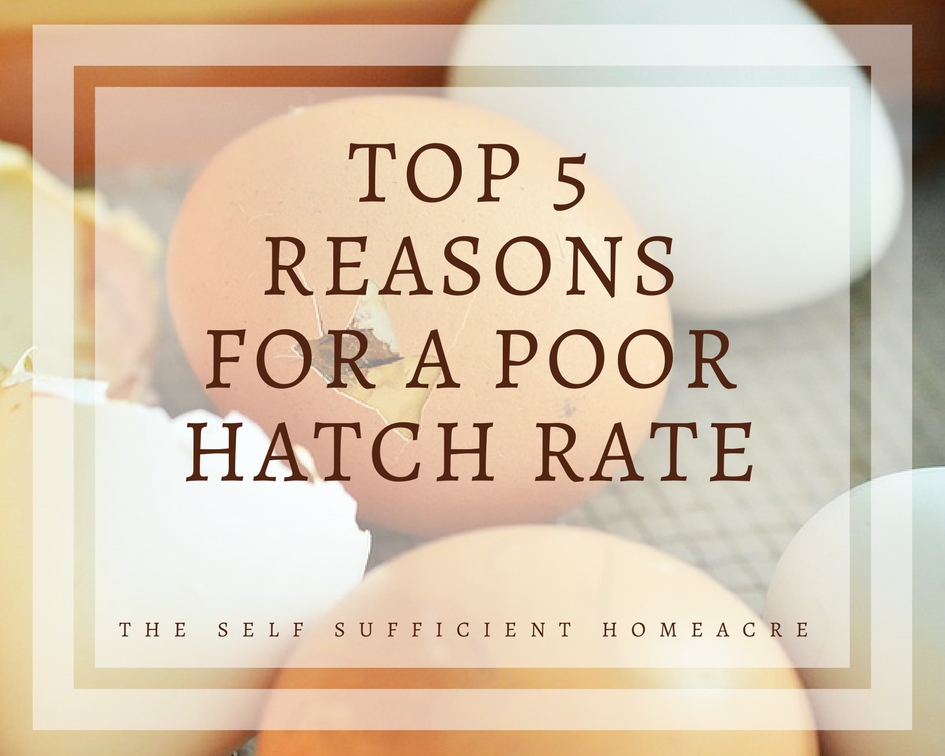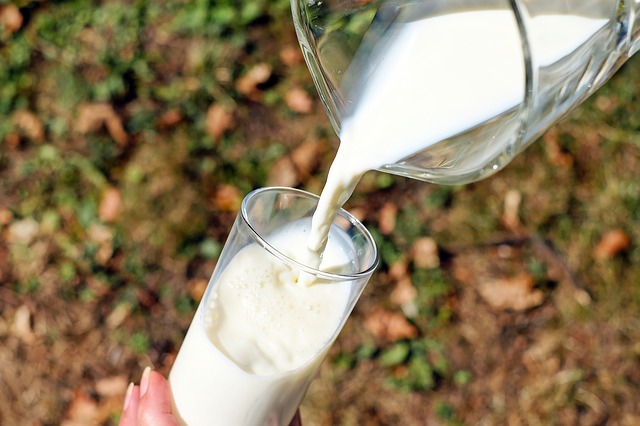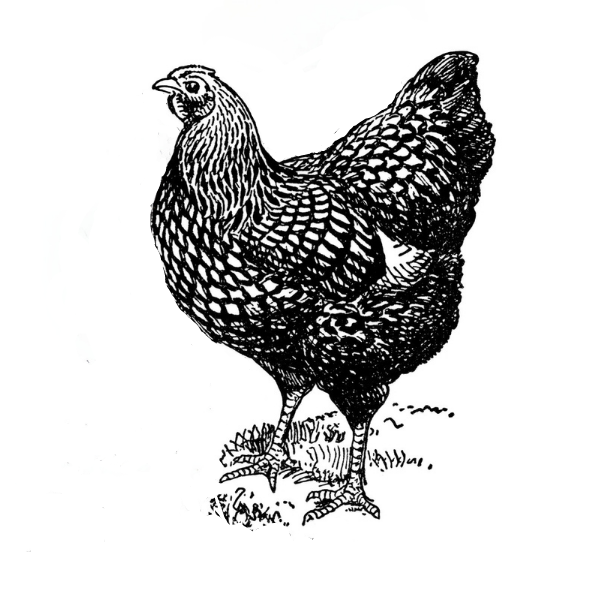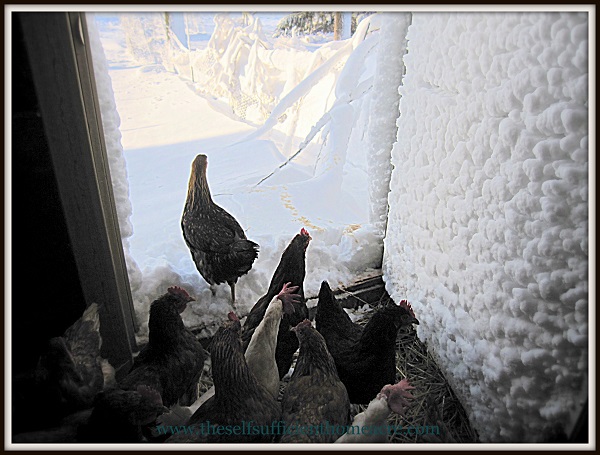
For more information about hatching eggs at home read my articles How to Hatch Chicken Eggs in an Incubator and 15 Helpful Hints for a Successful Hatch.
Reasons for a Poor Hatch Rate
Although hatching baby poultry in an incubator can be a fun and educational experience, sometimes we have a poor hatch. It’s very disappointing to spend 21 days turning eggs, filling the humidity trays, and waiting patiently, only to have few, or no, chicks hatch. So how do you know what went wrong?
This post contains affiliate links or advertisements.
Top 5 Reasons for a Poor Hatch Rate
Here are the most common reasons that few, or no, chicks hatch:
- Eggs were infertile, old, or improperly handled before hatch.
- Temperatures were too low, too high, or unstable during the hatch.
- Humidity levels were too high or too low.
- Eggs were not turned often enough, resulting in leg deformities.
- Incubator was opened while chicks were hatching.
How Can I Find Out What Went Wrong?
You may never know exactly what caused a hatch to go bad. However, you can do some detective work to get a better understanding of what happened. I usually wait 2-4 days past the expected hatch date before I clean out the incubator. If the temps are slightly low during the hatch, you may have a few chicks that start to pip a couple of days late. Once you are sure that no more eggs are going to hatch, take them outside and break each one open. Don’t do this in the house (just in case any of the eggs are rotten).
- If an egg looks old and runny with no embryo inside, it was most likely infertile, kept too long, or stored at temps that were too warm or cold before incubation, or in the very early stage of incubation.
- If you find embryos that stopped developing at different stages, it’s likely that the temperature in the incubator experienced too many ups and downs, or the humidity trays dried out several times.
- If the chick was fully formed but never broke through the shell, the humidity or temperature may have dropped too low and the chick died. If the humidity was too high from days 1 through 18, the chick may have drowned during the hatch. The albumen (egg white) needs to dry out at a certain rate so the air space is large enough for the chick to breathe as it prepares to pip through the shell.
- If the chick pipped through the shell but didn’t progress past this point, the humidity or temperatures might have dropped too low, or the chick may have had leg deformities or weakness (likely caused by improper turning).
It’s a good idea to candle the eggs every week during incubation. Eggs that never develop an embryo may be removed early in the incubation to prevent rotting and bursting open. Trust me, you don’t want that to happen.
Learning from a Poor Hatch
Hopefully, each time you hatch eggs in an incubator you’ll have better success rates. It can be frustrating to lose chicks and wonder what could have killed them. Here’s a great way to keep track of the hatch conditions and improve…
Take Notes During Incubation
It is also advisable to make notes during the incubation period if anything unusual happens. If the temperature drops or spikes, the humidity trays dry out, or you forget to turn the eggs… make a note of it on your incubation calendar. This will allow you to compare the end of embryo development to the dates that problems were noted. If the eggs were not turned and fully formed chicks were unable to hatch, you’ll have notes about forgetting to turn the eggs properly. Hopefully, the next hatch will be more successful after you learn what mistakes were made this time.
Here is a chart of embryo development that is very helpful for determining when the death of an embryo occurred during incubation.
This is by no means a complete list of reasons for an unsuccessful incubation. There can be genetic problems with the embryos, too much humidity early on, and eggs that were jostled before (or during) the hatch, to name just a few.
To reduce problems that cause poor hatch rates, review proper egg care and incubation procedures prior to starting your hatch.
Have you had problems with a hatch? Did you learn how to ensure a better hatch the next time? What is your most common problem with hatching poultry at home?








Wow!.
I am a new parent to my chicken . I read all the mail here and believe that I have had every issue as everyone else at sometime or another. My latest issue is with chickens not getting out, not even making a hole. . It’s in my new incubator. It’s fully automatic temp humidity and turning. I have been almost set and forget. But it still turns the eggs every few hours… Your advice may have identified my problem. I am going to reserect my old incubator and increase the humidity and stop it turning on the last 3 or 4 days. I set a tray every week. (60 eggs) of native Philippines chickens. However they are consistently inconistant. They hatch as early as 16 and up to 23 days.
It’s set at 38c and 60% humidity and turning several times a day. (don’t know how often but it’s in the program) my old one is going now and I stopped it turning and it’s set at 38c and now 70% humidity.. I have a data logger temp and humidity with wifi in the egg tray. It holds it too close to exactly what it is set at.
Hi Robin,
I’m sorry to hear that you are having hatching issues. With automatic turners, you are supposed to remove them 3 days before the hatch date. If the eggs don’t stop turning, the chicks can’t move into position to hatch. It sounds like the old incubator is a better option until you can figure out how to use the new one properly. Best wishes! Lisa
I noted alot of problems on un hatched eggs , some pipped but never made it while fully developed ,
Hi James,
It sounds like they may have had either problems with formed poorly formed legs from improper turning, the humidity was too high for the air sac to expand normally, or the eggs were turned past day 18 causing the chicks to be in the wrong position to hatch properly. I hope this is helpful.
as a biginer I v been helped
I’m glad this was helpful.
Best wishes… Lisa
why is it that a small number of chicks hatch on day 17 while a huge number don’t how can I rectify the situation
Hi Kevin,
There are a lot of reasons that can happen. Did you crack the eggs open to see if the embryos started to develop? If the temperature doesn’t remain stable, it can cause chicks to die at various stages, so you would see embryos of different sizes. If there are no embryos, the eggs may not have all been fertile or they were too cold or too old to hatch.
If the chicks were fully developed but didn’t hatch properly, it is possible that the eggs weren’t turned often enough (which causes leg deformities that prevent proper hatch) or they were turned within 3 days of hatch (which can disrupt their hatching position) I hope this helps.
Hi I’m
On my third run of eggs with a new incubator.
What is the best temperature in your opinion to keep the eggs between mine seems to go between 36.5-37.8 and I’m checking it regularly.
Hi Claire,
The best temperature for chicken eggs is between 98 and 100 degrees Fahrenheit or 36.6 to 37.7 degrees Celcius. Best wishes… Lisa
Hi Dear,
Iam confused from an answer you have posted to teem that,
The relative humidity for the last 3 days should be between 70-80%
But below you said,
during the last 3 days of the hatch, the humidity should not fall below 25% and should not go above 60% RH
So my point is that during last three days what is the value of humidity as you said it should be between 70-80% and on the other hand it should not go above 60% Please help it could help me …
Hi,
I’m not sure where you found the humidity level of 25% to 60%… that is not correct. Maybe someone else mentioned those numbers? You want to keep the relative humidity levels between 70 to 75% for the first 18 days and then lower the humidity slightly for the last 3 days to 65 to 70% relative humidity. The reason you want to keep these levels of humidity… for the first 18 days you don’t want the moisture from the egg to evaporate too quickly, leaving the chick without enough liquid for proper development. For the last 3 days, you want to lower the humidity slightly to help the chick break through the egg shell and get their first breath of air. On the other hand, you should not open the incubator until the chicks have hatched or the humidity will be lost and this can cause problems with hatching from the dry conditions. I hope this helps.
Useful information thanks
In my first batch, the hatch rate was 25%, I thought eggs were not kept properly, in my second batch I the rate is also 25%, I kept eggs in temperature between 15°c and 18°C. Temperature 37.8°C in the incubator. I was turning egss before incubating them. Plz help I need something above 80%
Did you crack open any of the eggs that failed to hatch? If there weren’t any embryos, those eggs may not have been fertilized by the rooster. You can check eggs by cracking one open and looking at the germinal disc (the white spot on the yolk)… if it looks like a bulls-eye, the egg is fertile… if it looks solid white, it is not fertile. Obviously, you can’t do this to the eggs you put in the incubator. But if you are eating eggs, this will give you an idea of how many are fertile. If you have 1 rooster to every 8 to 10 hens, you should have a pretty good fertility rate.
If the fertility rate seems good but there aren’t any embryos in the failed eggs, then it is possible that they weren’t fresh enough… how long did you keep the eggs before starting the hatch? I am trying to hatch them within one week for the best hatch rate.
If you find that there are embryos that died at different stages, it is likely that the temperature fluctuated too much.
I hope this helps… Lisa
What is the relative humidity during the lock down.
Try to maintain a relative humidity of 70 to 75% during the first 18 days and a relative humidity of 65 to 70% for the last three days of the hatch.
What is the reason for my chickens to only hatched 3 eggs out of 14 eggs and I’m talking about natural hatching by a hen
It’s hard to say what the problem is. If there are too many hens for the rooster, it could be a lack of fertilization. You could also have a hen that isn’t setting on the nest reliably and some of the embryos were chilled. Best wishes with your next hatch.
I mean what about curl chicks what might be the cause
Hi Douglas,
I’m not sure what you mean by ‘curl’… if you see this, please give me a little bit more info so I can try to help.
Lisa
Dear Sir,
I am getting only a 50% hatch rate on my every hatch, using an automatic incubator of capacity 5000 chicken, Mainitng temp 100 F and Humidity 85 F ( Dry Wet Bulb thermometer and Digital meter both) but same hatch result in every time.
I have my own breeder parent chickens which are 2.5 years old commercial, Cobb. ( which are used for poultry chicken production ).
Out of total unhatched eggs, we get 60 % unfertile eggs that are also we are not able to understand although we are providing the Ready-Made commercial Feeds. We do AI (artificial Insemination )process.
Out of total unhatched eggs
60% unfertile
30% dead at after 16 days
8% dead before 16 days
2% alive but did not come out and malformed or week
Please suggest, I am at an utmost loss.
Normally these parent chickens are used for only 1 year for eggs then it is sold because of reduced production. But we are ready to keep them which low production as well, please suggest could that be the reason of more infertile eggs.
The most common cause of a large number of fertile eggs is keeping too many hens for each rooster, but since you are using artificial insemination that isn’t the cause. Eggs should be kept under the best conditions for only a few days before placing them in the incubators. If the eggs are handled properly before and during incubation, then the most likely cause is a problem with the roosters used… I suggest bringing in new breeding stock to replace them. I hope this helps and I’m sorry for the delay in answering.
Hello this is my first time trying to hatch eggs. The temperature stays between 99.5 to 100. I turn the eggs every 4 hours a day. Today is the 21 day for the eggs to hatch. I haven’t seen any movement in the eggs yet. I have read it can take an extra 5 days sometimes. I have looked at my eggs under a light to see how they are developing. I only see 2 out 6 that actually has a chick in them what did I go wrong?
Hi Frances,
You should stop turning eggs and opening the incubator on day 18. The chicks need to move into the correct position to begin pipping through the eggshell. If you continued opening the incubator and turning the eggs, the chicks may have died. Since you only saw 2 chicks out of the 6 eggs incubated, it is likely that the other eggs were not fertile, or something happened to the chicks very early in the incubation. I hope this helps.
What is the relative temperature in the incubator
99.5 degrees Fahrenheit or as close to this as possible.
My son has ran his incubator for two sets of eggs and still hasn’t had an egg hatch this year. He hatched several batches last summer and had 75% hatch rate. He didn’t check the last batch but this time he found that the chicks were all formed in the egg except their guts are outside their body.
Hi Sarah,
This is a common problem when the eggs are not turned properly. The eggs should be turned an odd number of times (at least 3 times) each day to make sure the intestines do not stick to the inside of the shell and the legs form properly as the embryo develops. I hope this helps.
Okay, so I had mixed results – I MUST say, keeping the hatcher closed up really helped. I had on most breeds ( I hatch different Heritage breeds) between 71 and 78 % Hatching rate.
So thank you for the help.
I’m quite perplexed about my Australorps which suddenly dropped to 10% , that while the others maintain percentages of over 70%.
Oh I forgot to say… I do candle the eggs prior to placing them in the hatcher and only fertilsed developed eggs are transferred to the hatcher on day 18
Sorry – typo it should read day 20 not 30#
Should I leave chicks in the hatcher until all eggs have hatched or can I remove them from time to time as they hatch. I hatch different breeds and some start to hatch day 30 while others hatch day 24. The average hatching rate this week was 50%. Some breeds 100% others 33%
Hi Christopher,
I have successfully hatched different species of baby poultry using the following protocol…
– I start the eggs out in one incubator and write the hatch date on the egg with a pencil
– 1 week to 3 days before one species is due to hatch, I move them to a second incubator to hatch
– I do not remove the chicks from the incubator as they hatch… for the best hatch rate you should wait until the eggs that have pipped finish hatching or the humidity and temp will drop, which can kill the rest of the hatching chicks.
Although I have done this in the past, I think that it is really much better if you have a separate incubator for each set of eggs. The less you open the incubator, the better the hatch rate. I hope this helps!
I will follow your advice and keep you posted!
Thank you so much for the reply
hi author.problem in my incubator is worst hatch rate. in first candling you find some germinal disc have dried, again most chicks have leg deformed or intestines out of the abdomen.some others die before comming out of the shells
Hi Gilbert,
In my experience, leg deformities were often caused by the improper turning of eggs during incubation. Weak or deformed legs prevent chicks from hatching properly and they die before they can break free of the shell.
When a chick is born with the intestines outside of the abdomen, this can be caused by the egg being exposed to cold temperatures before incubation or it can be caused by temperatures that are too high during the middle stages of incubation.
Your early losses noted at first candling could also be caused by low storage temperatures before incubation.
I have some other articles on how to incubate eggs that are helpful for your next incubation. I hope this helps.
I’m curious whether anyone is seeing lower hatch rates with the proliferation of WiFi and cell phones. The newer WiFi signals are far stronger and since they cause fertility issues in humans I’m wondering if they will also cause those issues in poultry.
I haven’t noticed any difference in hatch rates.
they will not
I am having problems with the chicks getting out of the egg.The membrane seems to dry out and sticks to the chick.
Hi Anne,
This is a sign that there isn’t enough humidity in the incubator. If you are opening the incubator to check on them, you are letting the humidity out. If not, you need more water in the humidity trays going into the 3 day lock-down period before hatch day. I hope this helps.
dear
i have a automatic incubator controlling 37.7c temp and humidity RH55-65% throughout the 21 days but hatching rate is low 3 hatched out of 13 .what is the possible reason,
Hi,
I’m sorry to hear that. The relative humidity for the last 3 days should be between 70-80%
From the time the egg is laid until the lock down period during the last 3 days of the hatch, the humidity should not fall below 25% and should not go above 60% RH…so that the air sac in the large end of the egg becomes large enough for the chick to get a breath of air before pipping through the shell.
For the last 3 days the humidity should be raised so that the membrane doesn’t dry out and make it difficult for the chick to break through it to hatch.
I hope this helps.
We have had failed hatch with our leghorn chicks on two successive hatches with other breeds doing fine. Eggs are fertile and chicks well developed, looks like late deaths but why the leghorn only? Beautiful looking eggs, any ideas? Alison
Hi Alison,
I’m sorry to hear that your leghorn eggs are failing. That is very odd. If you have had eggs from several other breeds in with the leghorn eggs and they did fine, it makes me wonder if there is a genetic problem with the leghorns. Are they very large eggs? I’ve read that you should go with normal sized eggs rather than very large or small eggs. I’ve also read that chicks that grow larger than usual in the egg have a lower hatch rate, but they didn’t say why.
If the leghorns were in an incubator without eggs from other breeds, perhaps it is a coincidence and there was a problem with the humidity or temp. If they take longer to hatch, and you are removing the other chicks as they hatch, the humidity might have dropped too low, causing the chicks to dry out too much and reducing their ability to work their way out of the egg.
Let me know if you have any other information so I see if anything else comes to mind.